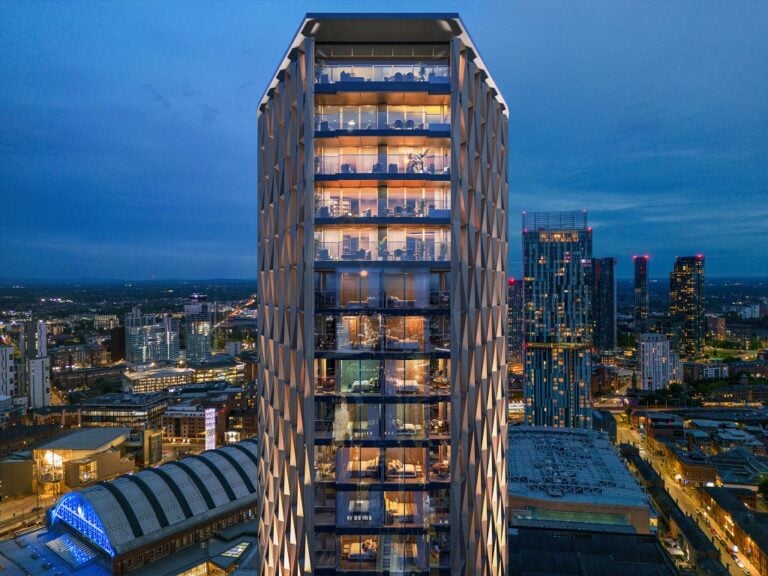The construction industry is breaking out trying new materials that work with the environment, are practical but with a design edge. In London’s trendy Fitzrovia, the architect, Bureau de Change www.b-de-c.com/ has completed its most recent project – ‘The Interlock’ commissioned by the developer HGG.
The Interlock is a mixed use building with a café on the ground level and residential units over four floors above, situated within a traditional London 19th Century terrace.
The Interlock’s proportions mirror the adjoining houses, but the front exterior and overall design pushes in a new direction. The front façade is built using blue matt finished bricks that give the appearance of ‘twisted cogs’.
The newly completed building has a front exterior which plays on that of its traditional neighbours.
Co-founder, Billy Mavropoulos at Bureau de Change said: “We were walking the line of what would be technically possible. But through this process we found a point that was both buildable and produced the richness and movement we were trying to achieve.”
The building’s floorplate has been created with a staggered layout at the rear which results in floor size decreasing floor size as you go up a storey. This clever design by Bureau de Change includes deep light wells and skylights throughout flooding the interiors with light.
Co-founder Katerina Dionysopoulou said: “We were interested in taking these very traditional proportions and in some way subverting it, like a puzzle box that seems familiar and reveals a hidden complexity that increases the more you interact with it.”
In the residential units, the interior design is kept minimal with an “elemental palette” of terrazzo bathrooms, natural stone worktops, sprayed-timber kitchens and oak floors.
The trend is increasing across the design and construction industry to consider the impact on the environment.
Swiss paint manufacturer, Monopol Colors alongside Dutch architects UNStudio have developed a new paint ‘The Coolest White’.
The highly reflective paint will reduce the proportion of heat a building absorbs and cool down cities against the effects of climate change.
The aim in restricting the amount of light and heat absorbed by a building means a reduction in the need for air-conditioning and urban heat islands.
Principal architect of UNStudio Ben van Berkel said: “It is undisputed that our cities are rapidly getting hotter, so we have to ask ourselves how we can stop this trend. The Coolest White makes buildings more resilient and on the other hand it can drastically reduce the urban heat load.”
For more photos visit http://www.b-de-c.com/the-interlock









